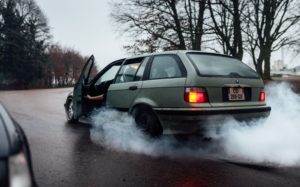The Link Between Speed and Accident Fatalities
In 2021, excessive speed was responsible for more than a quarter of all motor vehicle accident fatalities. It is likely that the figure is far higher when the number of crashes where speeding was just one of the factors is taken into account.
The Risks Associated With Speeding
The primary reason why driving too fast for road conditions is so dangerous is that it becomes harder to handle your vehicle. If your tire hits a patch of gravel or ice, it may lose traction, which can cause it to slide or spin. When you are traveling at a reasonable speed, it may be possible to correct the problem before you leave your lane or cross over to the other side of the highway.
In addition, if your car does make contact with another person, object, or vehicle, it will unleash more energy because of its higher speed. The amount of energy released at impact will be even greater if you drive a truck or SUV as opposed to a passenger vehicle, and a greater release in energy results in a greater force placed on objects involved in the collision.
In some cases, the initial collision isn’t what causes a fatality. Instead, the force of the impact may push a car into an intersection or into another lane of traffic where a secondary collision might occur. If you are involved in an accident caused by another driver traveling at an unsafe speed, you may want to talk to an Allentown personal injury attorney.
Obeying the Speed Limit Isn’t Always Safe
You may not be breaking the law if you drive at or below the posted speed limit. However, if roads are covered in snow or ice, it may not be safe to do so as your car might have trouble maintaining traction with the road at speeds higher than 10 or 20 miles per hour. Staying well below the posted speed limit may also be ideal during periods of heavy rain or snow as it can be harder to see.
You’ll Need More Time to Stop
The faster your car is moving, the more time it will need to come to a complete stop. For instance, if you are traveling at 20 miles per hour, you’ll need about 40 feet to come to a complete stop. However, if you are traveling at 70 miles per hour, you’ll need over 300 feet to do so safely.
Ultimately, even if you know that a collision is imminent, you might not have enough space to avoid a crash. Of course, it’s still worth hitting the brakes as a collision at a lower rate of speed can significantly reduce the risk of serious injuries or fatalities. An Allentown personal injury attorney may be able to provide assistance in the aftermath of a wreck that results in the death of a loved one. An attorney may also provide advice about what to do if the other driver is killed in the wreck.
Tips for Reducing Your Speed
One of the easiest ways to slow down while on a road or highway is to give yourself plenty of time to reach your destination. This may be especially true during periods of inclement weather when even major highways might not be clear of ice and snow. During periods of ideal weather conditions, leaving just a few minutes earlier for work or school in the morning might help you suppress the urge to drive as fast as you can. You should also consider that slowing down can improve your car’s fuel economy and reduce wear and tear on tires, brakes, and other key components.
If you are involved in a Pennsylvania accident caused by another driver’s negligence, the attorneys at Metzer & Kleiner may be able to help. You can contact our Lehigh Valley office at 610-435-7400 or by using the contact form on our website.




Speak Your Mind